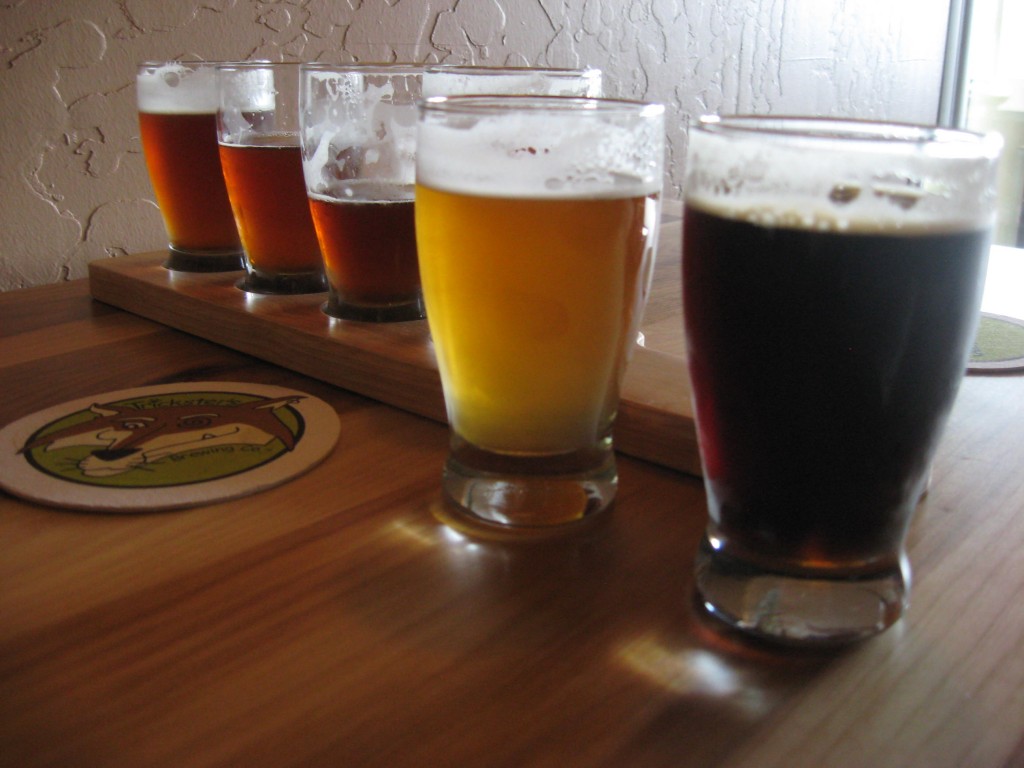Written by Amanda Wishin
 Give me something that is both salty, sweet, hot and cold, and you have given me the perfect food. Yes, I will admit that am one of those people that dips French fries in Frosty’s. I am also someone that generally asks for the hoppiest beer on tap. This hasn’t always been the case. My taste in alcohol started off very sweet (think Mike’s Hard Raspberry Lemonade), transitioned to yellow fizz (oh the days of college and Keystone Light), and eventually became addicted to a variety of craft beer.
Give me something that is both salty, sweet, hot and cold, and you have given me the perfect food. Yes, I will admit that am one of those people that dips French fries in Frosty’s. I am also someone that generally asks for the hoppiest beer on tap. This hasn’t always been the case. My taste in alcohol started off very sweet (think Mike’s Hard Raspberry Lemonade), transitioned to yellow fizz (oh the days of college and Keystone Light), and eventually became addicted to a variety of craft beer.
Tastebud Basics
The average adult has between 2,000 and 10,000 taste buds that perceive sweet, salty, sour, bitter, and potentially a fifth savory taste called umami. Salty and sour detection is needed to control salt and acid balance. Bitter detection warns of foods containing poisons. Sweet provides a guide to calorie-rich foods. Taste buds in combination with smell discern flavor.
Want to read more? Please click…

 (Boulder, CO) – The American Homebrewers Association (AHA) is pleased to announce that Mississippi Governor Phil Bryant has signed a bill that will effectively legalize homebrewing throughout the state. Mississippi is now the 49th state to permit homebrewing. A Senate version of the bill passed in early February and it was then voted on by the State House of Representatives in March.
(Boulder, CO) – The American Homebrewers Association (AHA) is pleased to announce that Mississippi Governor Phil Bryant has signed a bill that will effectively legalize homebrewing throughout the state. Mississippi is now the 49th state to permit homebrewing. A Senate version of the bill passed in early February and it was then voted on by the State House of Representatives in March. The 21st Amendment predominantly leaves regulation of alcohol to the states. Therefore, even though homebrewing is federally legal, it is still up to individual states to legalize homebrewing in state codes. Prior to today’s announcement, Mississippi and Alabama were the only two states that did not allow homebrewing. The AHA will continue working with homebrewers in Alabama to legalize homebrewing.
The 21st Amendment predominantly leaves regulation of alcohol to the states. Therefore, even though homebrewing is federally legal, it is still up to individual states to legalize homebrewing in state codes. Prior to today’s announcement, Mississippi and Alabama were the only two states that did not allow homebrewing. The AHA will continue working with homebrewers in Alabama to legalize homebrewing.




 Modern-day hopheads–the beer drinkers who gleefully, obsessively seek out hoppier and hoppier brews–don’t usually start out that way. Most people have a natural aversion to bitter compounds–useful for avoiding eating lethal doses of poisons in the wild. No, one must work one’s way up to hops: Start off drinking beers with lower IBUs (International Bitterness Units, one measure of how bitter a beer is), be them ambers, lagers, brown ales, or stouts. Next, try a pale ale. Then try many pale ales. Then discover the IPA — and with it, become obsessed with hop varietals such as Simcoe (piney aroma) and Amarillo (fruity aroma). Be happy with that for a while. Maybe try a double IPA (twice the malt, twice the hops as a regular IPA), which may or may not be successful, depending on whose you drink. Begin to love being punched in the face with a fist of hops. Become obsessed with IBU ratings. Buy the hoppiest beers one can find, even if they don’t actually taste all that good. Despair.
Modern-day hopheads–the beer drinkers who gleefully, obsessively seek out hoppier and hoppier brews–don’t usually start out that way. Most people have a natural aversion to bitter compounds–useful for avoiding eating lethal doses of poisons in the wild. No, one must work one’s way up to hops: Start off drinking beers with lower IBUs (International Bitterness Units, one measure of how bitter a beer is), be them ambers, lagers, brown ales, or stouts. Next, try a pale ale. Then try many pale ales. Then discover the IPA — and with it, become obsessed with hop varietals such as Simcoe (piney aroma) and Amarillo (fruity aroma). Be happy with that for a while. Maybe try a double IPA (twice the malt, twice the hops as a regular IPA), which may or may not be successful, depending on whose you drink. Begin to love being punched in the face with a fist of hops. Become obsessed with IBU ratings. Buy the hoppiest beers one can find, even if they don’t actually taste all that good. Despair.

You must be logged in to post a comment.